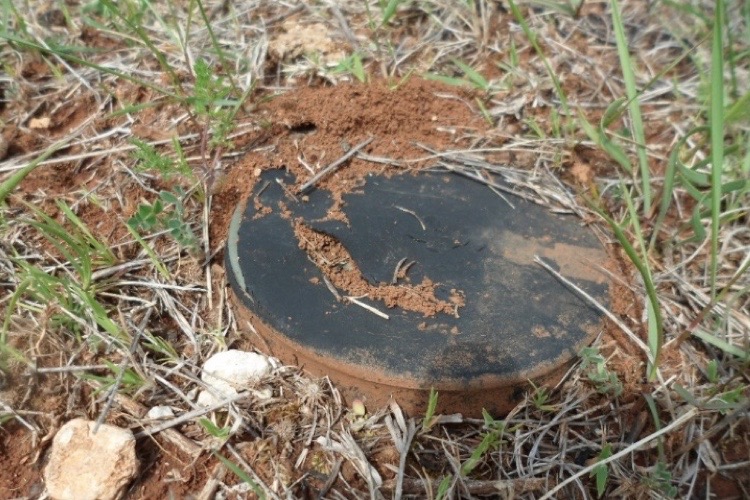Organic semiconductor sensors for trace explosives detection
It is estimated that across the world more than 100 million landmines remain in the ground in current and former warzones. These legacy landmines in post-conflict areas carry a huge cost in terms of injury to civilians, unfarmed land, and loss of trade and communication. There is a potential security threat of the availability of explosive materials being scavenged by terrorist organisations for homemade explosive devices.
New technologies are needed that can aid the process of humanitarian demining by excluding mine-free areas from the detailed search zone, and providing complementary information to metal detection to reduce false positive detections.

Researchers in the Organic Semiconductor Centre (OSC) are studying trace-chemical vapour sensors for nitroaromatic molecules, based on molecular interactions between thin films of fluorescent polymers and TNT-like molecules. Building on this research, Professor Graham Turnbull, Dr Ross Gillanders and colleagues have been working in partnership with humanitarian demining and EOD (explosive ordnance disposal) organisations to develop new approaches to reduce the minefield search area and to detect improvised explosive devices.
Fieldwork on test minefields and collaborations with end users help the research team to understand the operational requirements for explosive sensing technology and gain feedback that directs the translation of their research to applications.
The OSC team partners, formally and informally, with bodies including:
- Croatian Mine Action Centre's Centre for Testing, Development and Training
- Swedish EOD and Demining Centre (SWEDEC)
- Urs Endress Foundation (Switzerland)
- TNO (Netherlands)
- International CBNRe Institute (Belgium).
They are currently developing area-sampling strategies on minefields combining sensors with colonies of foraging honeybees in a project funded by the NATO Science for Peace and Security Programme.